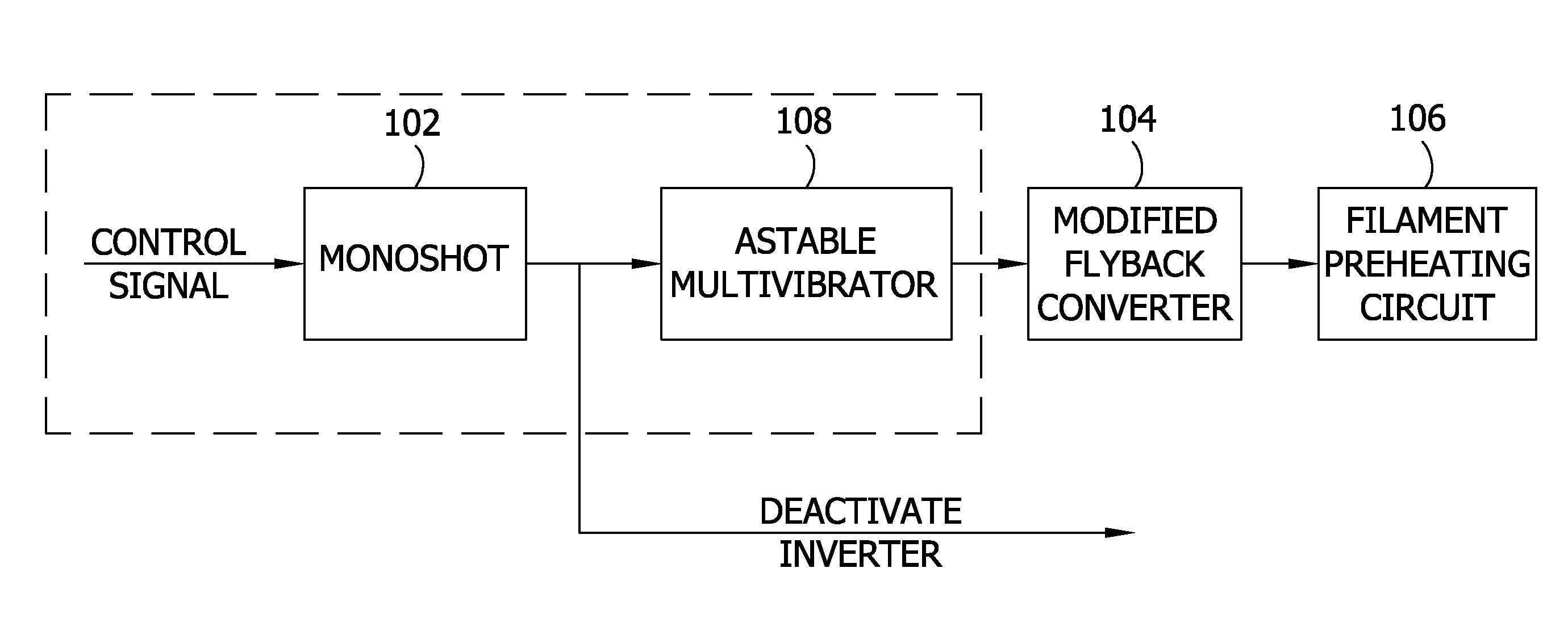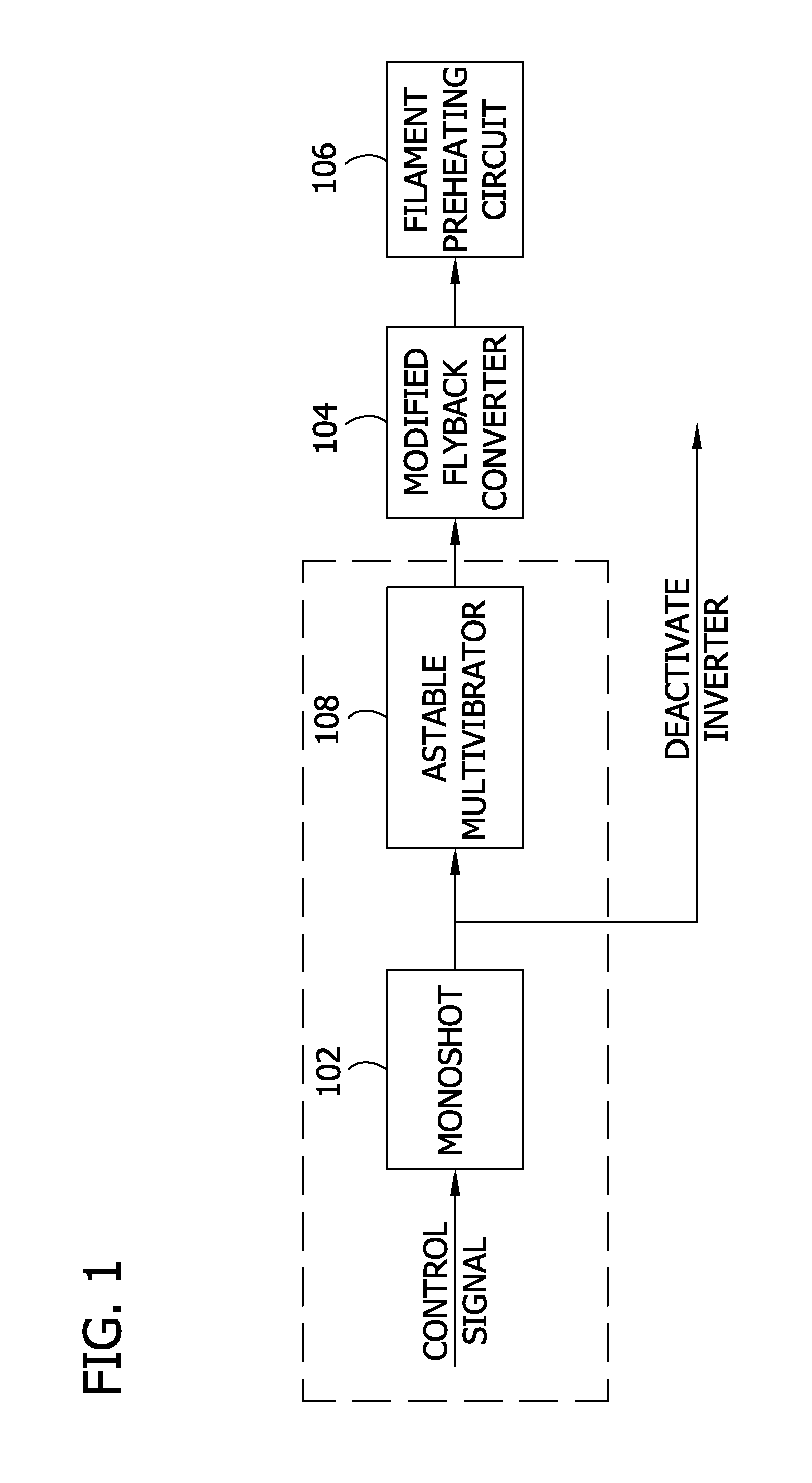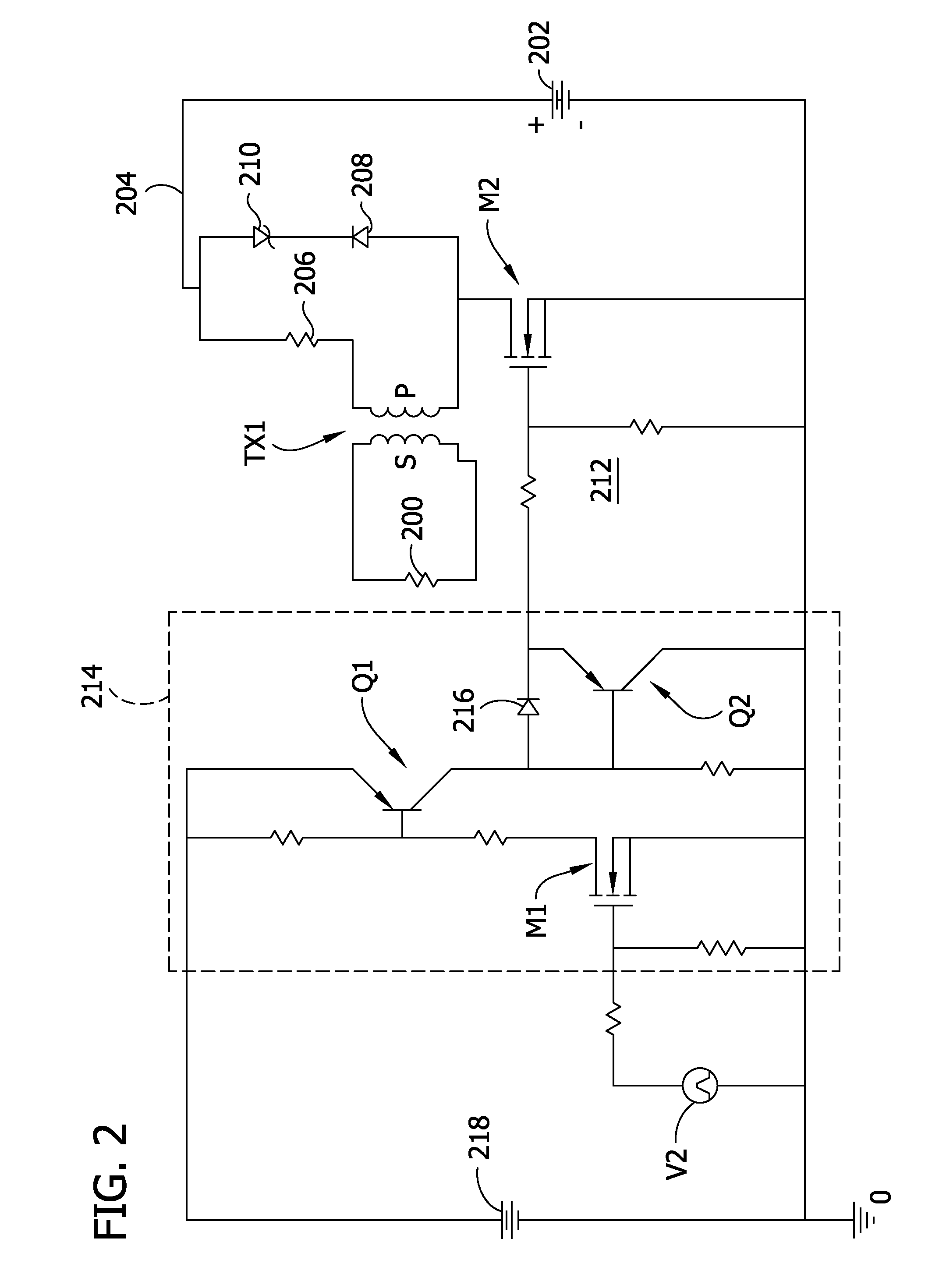Stand alone lamp filament preheat circuit for ballast
a technology of filament heating circuit and ballast, which is applied in the direction of transit-tube circuit elements, circuit elements of cathode-ray/electron beam tubes, circuit elements of structural circuit elements, etc., can solve the limit on the degree to which the filament heating power may be reduced, and the lamp life is considered to be significantly reduced
- Summary
- Abstract
- Description
- Claims
- Application Information
AI Technical Summary
Problems solved by technology
Method used
Image
Examples
Embodiment Construction
[0016]In one embodiment, the present invention is an independent fluorescent lamp filament preheating circuit. It is contemplated that this circuit would operate independently of any normal ballast operation and would be compatible with most if not all types of ballasts. For example, this circuit may be used with in conjunction with instant start self-oscillating topology ballasts to convert the ballast into a program start ballast. Alternatively, or in addition, this circuit may be used for lamp filament heating during dimming operation of a ballast.
[0017]FIG. 1 is a block diagram of one embodiment of a filament preheating circuit according to the invention. The half bridge self-oscillation aspects of normal lamp operation are not shown in FIG. 1 and FIG. 2. A filament preheating circuit 106 is energized by a flyback converter 104 which has been modified. When power to a de-energized ballast is provided, a control signal indicative of the switched ON power activates a monoshot circ...
PUM
 Login to View More
Login to View More Abstract
Description
Claims
Application Information
 Login to View More
Login to View More - R&D
- Intellectual Property
- Life Sciences
- Materials
- Tech Scout
- Unparalleled Data Quality
- Higher Quality Content
- 60% Fewer Hallucinations
Browse by: Latest US Patents, China's latest patents, Technical Efficacy Thesaurus, Application Domain, Technology Topic, Popular Technical Reports.
© 2025 PatSnap. All rights reserved.Legal|Privacy policy|Modern Slavery Act Transparency Statement|Sitemap|About US| Contact US: help@patsnap.com



